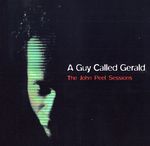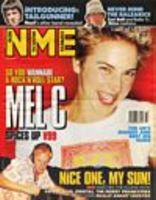 |
A Guy Called Gerald: The John Peel Sessions Album Review |
 |
Q Issue 156 September 1999 Page: ?? |
A Guy Called Gerald A Guy Called Gerald Simpson didn't have quite the same ring. There's a strong case for calling Gerald Simpson the progenitor of acid house in Manchester. Long before Happy Mondays and The Stone Roses yoked electro-bleeps and dance rhythms to indie rock, this ingenuous waif - who, legend has it, was still working in McDonald's when Voodoo Ray was sweeping clubland in 1988 - was crafting scorching acid anthems and setting the city's musical agenda. This Peel Sessions CD comes wrapped in some fearsome cosmic guff - "Light and gravity are wave forms through which consciousness passes" indeed - and is variable in quality. He's occasionally prone to wandering up minimalist techno-muso cul-de-sacs, although the ferocious and brilliant Emotions Electric stands out. *** [Reviewer: Ian Gittins] |
|
 |
NME 21 August 1999 Page: 34 |
A Guy Called Gerald A similar problem blights A GUY CALLED GERALD's THE JOHN PEEL SESSIONS' (Strange Fruit). While the Brit-techno pioneer was given free rein to record his early analogue experiments by Peel, he sadly neglected to record him a version of his seminal acid track, 'Voodoo Ray', which takes the sting out of this collection. (6) [Reviewer: JIM WIRTH] |
|
 |
The Wire Issue 186 August 1999 Page: 61 |
A Guy Called Gerald Collecting the Guy's Peel sessions from 1988, 89 and 95, this CD confirms the peripatetic Gerald Simpson as one of dance music's rare talents. While none of the early material is terribly groundbreaking (with the exception of the mindblowingly awful "Bruford" and the superior "Rockin' Ricki" which pitches House somewhere between the synth stab chaos of mid-80s Pop Art HipHop and Art Of Noise's strident pastiches), no one was a better synthesist of the ideas circulating at the time. Gerald worked the clavé preset on his Rolands more effectively than anyone else this side of Arthur Baker, squeezing extra rhythmic definition and more swing into House's rigid parameters. While Gerald's rhythmic gift served him well in drum 'n' bass, by the time of the 95 session, he was paying greater attention to texture: the cold wind blowing through the circuitboard industrialism of "Time Labyrinth", the stainless steel roots of "Amabruku"; and the machine chatter of "3 2 B One". [Reviewer: Peter Shapiro] |
|